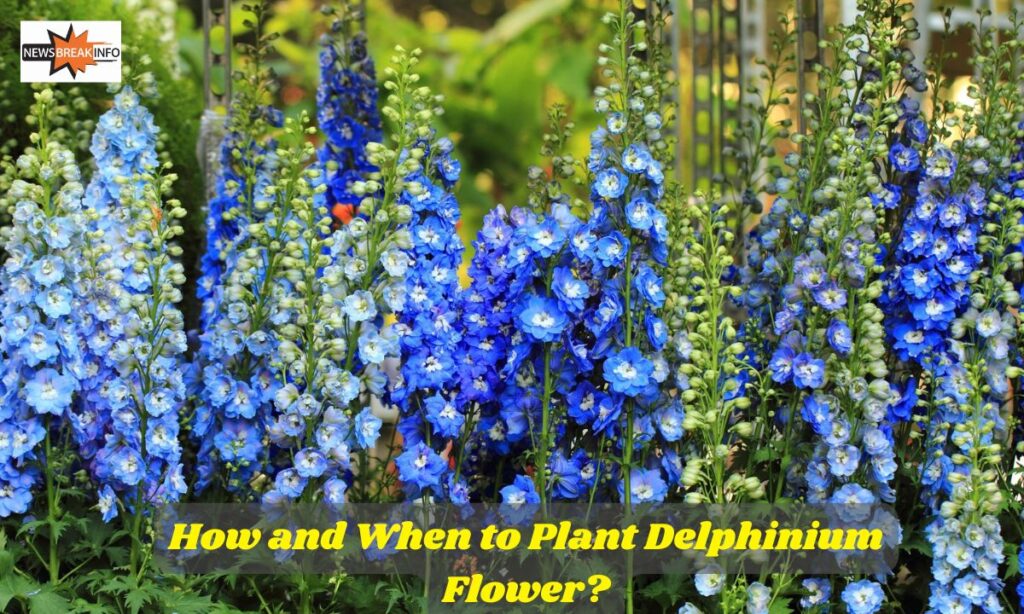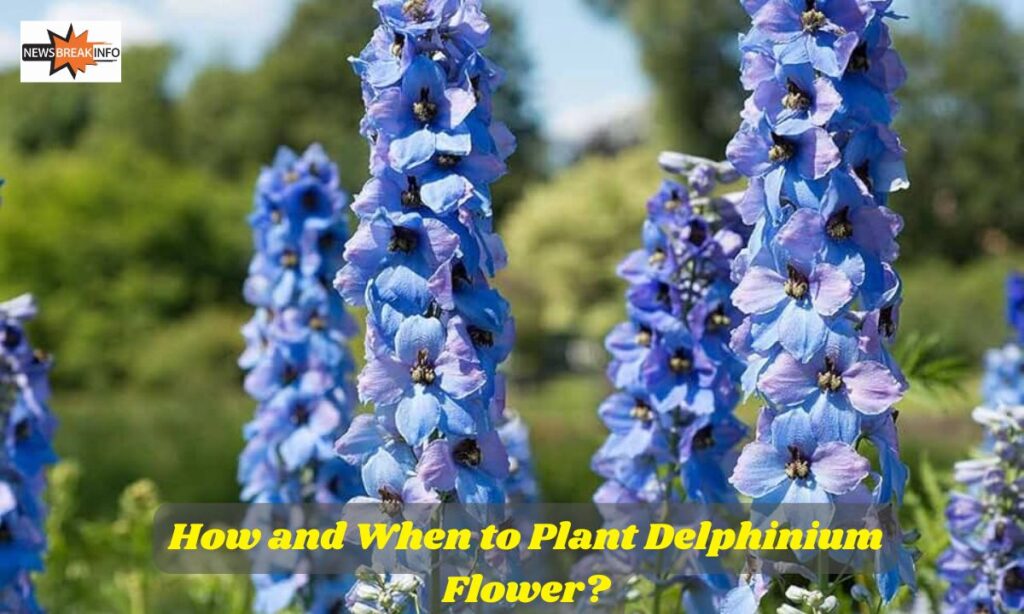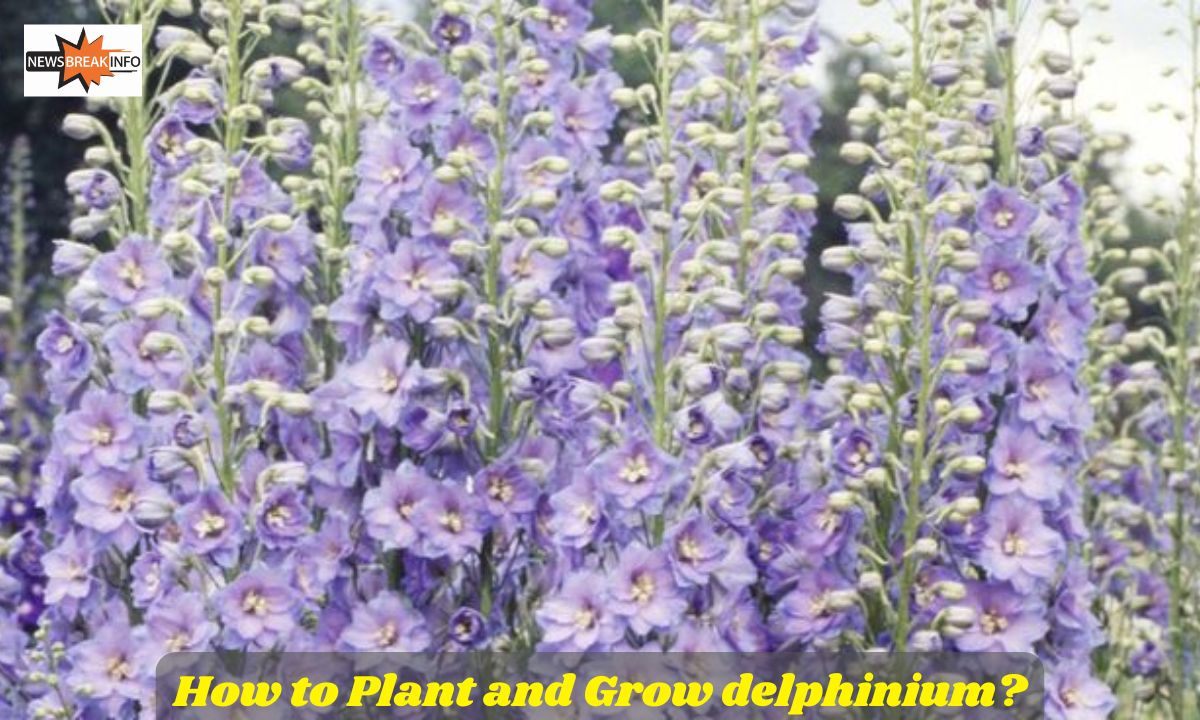Delphiniums are elegant flowering plants known for their towering spires and vivid colors. These perennial or annual plants are a favorite in UK gardens, adding height and a burst of color to borders and beds.
With proper care and attention, delphiniums can thrive, creating a stunning display year after year.
When Introduced
Delphiniums have been cultivated since ancient times, but they gained prominence in European gardens in the 18th century. Their popularity has grown steadily, particularly in the UK, where they have become a symbol of classic English gardens.
Two Main Types of Delphiniums Grown in UK Gardens

Perennial Delphiniums
Perennial delphiniums, such as the Pacific Giants and Belladonna varieties, are known for their tall, striking spikes of flowers. These hardy plants return year after year, providing consistent beauty to gardens. They bloom during the summer months and are available in shades of blue, purple, white, and pink.
Annual Delphiniums
Annual delphiniums, like the Larkspur, are ideal for gardeners looking for quick results. These varieties are easy to grow from seed and bloom within a single season. They’re perfect for cutting gardens and can add a splash of color to any space.
Where to Plant Delphinium Plants
Delphiniums thrive in well-drained, fertile soil and full sun. Choose a location protected from strong winds, as their tall stems can be vulnerable to damage. Consider planting them along fences or using stakes for support. These plants make excellent companions for roses and peonies in mixed borders.
How and When to Plant Delphinium Flower?

When to Plant
The best time to plant delphiniums is in early spring or late autumn. This allows the plants to establish roots before extreme temperatures arrive. For seeds, sowing indoors in late winter ensures early blooms.
How to Plant
Prepare the soil by enriching it with compost or well-rotted manure. Space plants about 2 to 3 feet apart to allow good air circulation. Dig a hole twice the width of the root ball, place the plant at the same depth as it was in its container, and water thoroughly.
Growing Medium
Delphiniums prefer slightly alkaline to neutral soil with good drainage. Adding organic matter helps retain moisture while ensuring proper aeration.
Sowing and Planting
Sow seeds in seed trays filled with a light, well-draining potting mix. Cover lightly with soil and keep moist. Once seedlings develop true leaves, transplant them into the garden or larger pots. For established plants, handle them gently to avoid damaging roots.
Also Read This: How To Grow And Care Tiger lily flowers: Complete Guide
Delphiniums Flowers Care Tips
Caring for delphiniums involves providing the right light and water. They need full sun and consistent moisture, especially during the growing season.
Keep the soil well-drained and enriched with compost. Apply mulch to retain moisture and protect roots from temperature fluctuations.
Light
Delphiniums need full sun to thrive. However, in regions with hot summers, partial shade during the hottest part of the day can prevent scorching.
Soil and Water
Keep the soil consistently moist but not waterlogged. Water deeply to encourage strong root development. Use mulch to retain moisture and regulate soil temperature.
Temperature and Humidity
Delphiniums prefer cooler climates and can struggle in excessive heat or humidity. They thrive in temperatures between 15°C and 25°C.
Fertilizer
Feed delphiniums with a balanced fertilizer every 4-6 weeks during the growing season. Avoid high-nitrogen formulas, as they promote foliage growth at the expense of flowers.
Pruning
Deadhead spent flowers to encourage a second bloom. Cut back the plant to ground level in late autumn to prepare for the next growing season.
Potting and Repotting Delphinium
When growing delphiniums in containers, use a large pot with good drainage holes. Repot every 2-3 years to refresh the soil and prevent overcrowding.
Pests and Problems
Delphiniums can be affected by aphids, slugs, and powdery mildew. Inspect plants regularly and treat infestations promptly with organic or chemical solutions. Ensure proper spacing and air circulation to reduce the risk of fungal diseases.
How to Propagate Delphinium?

Propagation ensures you get more delphiniums from existing plants. It can be done using seeds, division, or cuttings. Each method has its benefits and timing.
Seed Propagation
Collect seeds from mature plants in late summer. Store them in a cool, dry place until ready to sow. Germination can be improved by chilling the seeds for 2-3 weeks before planting.
Division
Divide established plants every 3-4 years in early spring. Carefully separate the root clumps and replant them in prepared soil.
Cuttings
Take cuttings from young shoots in early spring. Dip them in rooting hormone and plant in a sterile potting mix. Keep them moist and in a bright, sheltered location until roots develop.
Delphinium Companion Plants
Delphiniums pair beautifully with plants like:
- Roses: Their tall spikes complement the rounded blooms of roses.
- Peonies: Both share similar growing requirements, making them ideal partners.
- Foxgloves: These create a harmonious blend of vertical interest in borders.
- Lupines: Another spire-like plant, adding variety in color and texture.
Conclusion
Delphiniums are a rewarding addition to any garden, offering a striking display of color and elegance. By following the guidelines above, you can successfully plant, grow, and maintain these beautiful flowers.
Whether you’re a seasoned gardener or a beginner, the effort you put into caring for delphiniums will be well worth the stunning results.

FAtima is a talented content writer and digital marketer with expertise in SEO, social media management, and online marketing.










